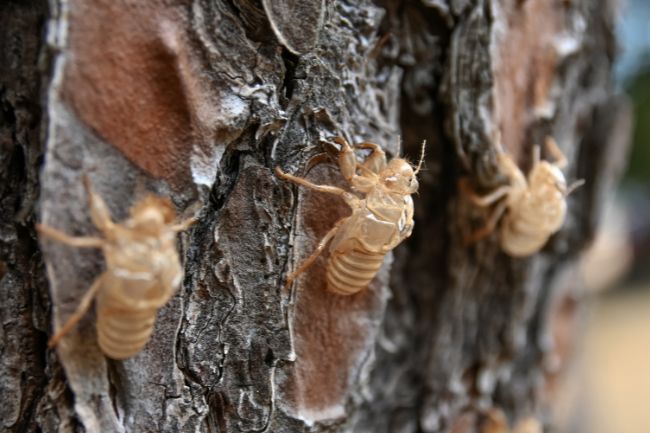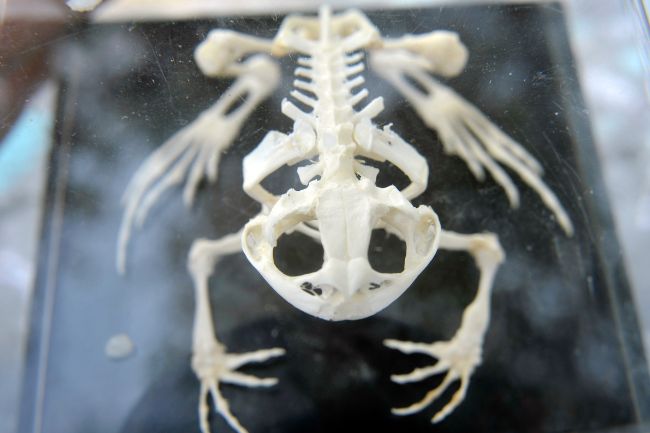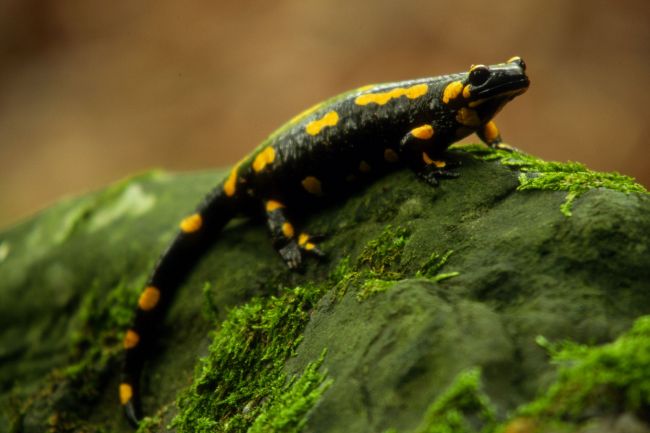Many people will know that humans are vertebrates, while insects are invertebrates. But how about frogs? They certainly aren’t anything like insects, but then at first glance they don’t seem to be anything like humans either. So the question is ‘Is a frog a vertebrate?’
While it might not seem important at first to know the answer to this question, understanding whether a frog is a vertebrate or not, can help us understand a great deal about their makeup and how they have adapted so well to different conditions across the world.
What Are Vertebrates?

Animals are often divided into two groups, vertebrates and invertebrates. Although a long-standing way of categorising creatures, these two divisions aren’t particularly scientific.
Vertebrates are fairly straightforward, these are animals with a spinal column. The spinal column is made up of a series of bones known as vertebrae. These, plus the spinal cord, made up of a bundle of nerves, are what makes up the spinal column, and helps vertebrates to move and control their bodies.
Vertebrates can look surprisingly diverse, from sea creatures such as dolphins, to arboral animals like chimpanzees. While externally very different, looking at their skeletons can demonstrate the similarities, with all vertebrates sharing a similar body plan of two arms and two legs attached to a central spinal column, with a skull at the top of this.
However, while all vertebrates are fairly closely related, invertebrates are a much more disparate and varied bunch. Unlike vertebrates they don’t share any particular characteristics, and have developed many different ways to get around.
Insects are invertebrates with an external skeleton, the exoskeleton. This ridged outer skin, protects them from the world and allows them to move around. Annalids, meaning worms, have an internal hydrostatic skeleton, that becomes ridged due to the pressurised fluids.

Other examples of invertebrates include jellyfish, crabs and corals, whereas vertebrates include mammals, reptiles and birds.
Also read: Is Snail Vertebrate or Invertebrate? (Let’s Find Out)
Frog Anatomy
Frogs are easy to identify, though they come in a range of sizes, colours and shapes. Their main characteristics include large bulging eyes, strong back legs, and often a long extendible tongue. Their skeletal structure is what makes them a vertebrate.

Like all vertebrates they have a symmetrical body pattern with two legs and arms connecting to the central spinal column. At the top of the column they have the head. They also have a digestive system that starts at their mouth and travels through various organs to their anus, through which all food passes.
Interestingly frogs do not chew their food, and swallow it by using their eyes to push it down their throat. This means that they can’t eat food that is too large for them to swallow.
Frogs are unusual in vertebrates that they are able to both breathe and drink through their skin. This is because their skin in particularly thin, and water and gases are able to pass through the thin layers into their bloodstream.
While it can be fairly easy to identify an animal as a frog, this doesn’t mean they don’t vary a huge amount. Some frogs are tiny, such as poison dart frogs, whilst others are huge, such as the pacman frog. Some have smooth skin, such as many tree frogs, whilst others are warty such as the common toad.
Some frogs have even lost some of the features we most recognise as being frog-like, such as many clawed toads, which have lost their long extendable tongues.

Yet despite all this, their basic body pattern, their thin skin, large eyes, and strong back legs, mean they are one of the most recognisable groups in the world.
Also read: Frog Skeletons: Do They Have Backbones?
Frog Classification
Scientists have long debated how to classify living things. Over the centuries many different ways to grouping plants and animals have been proposed, however today a common system used to to classify them is by how closely related they are to other living things, grouping together those that are the most closely related.
While this is a very useful system it’s easy to make mistakes, and it’s not uncommon for species or groups to be reclassified. Genetic coding is particularly useful to help decide where things may sit.
Firstly, living things are separated into Kingdoms. This is the most basic separation, separating plants and animals for example. Next come the phylum, groups that separate out arthropods, molluscs and annelids, for example. After this we have class, which brings us to groups such as mammals, which can be further reduced down to orders such as Carnivora.
Frogs are animals, meaning they sit within the Kingdom Animalia. Because of their spinal column they are then within the phylum Chordata, into which most vertebrates are placed. Within class they sit in Amphibia, being amphibians like newts and salamanders. And finally they belong into the order Anura, which is the order of frogs.

Conclusion
So when it comes to the question of whether ‘a frog is a vertebrate?’ the answer is a definite yes. Like all vertebrates they have a central spinal column, around which the rest of their skeletal structure is built.
Indeed, while frogs may look very different from humans, their body makeup really isn’t all that different from ours. They have two legs, two arms, a skull, and a spine. As with all vertebrates the blueprint has remained basically the same, while minor adjustments have allowed them to specialise and thrive within very particular circumstances.
It’s these specialisms that have allowed them to thrive and spread across the globe, finding new and diverse niches within which to flourish.

